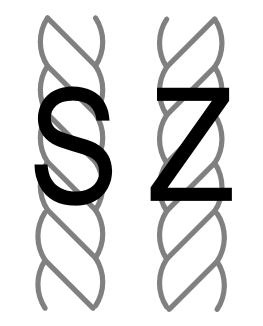I've talked about the spine before and how important it is to keep our spines flexible and healthy. As we grow older, our spines become less fluid, more prone to injury, including osteoporosis, disc problems and general aches and pain. Doing mindful, slow twists can help strengthen our spine, helping us to prevent trouble and to heal existing difficulties.
Twists help in spinal disc lubrication. They increase lymphatic flow throughout the body and improve the vascular system, dispersing oxygen, lymph and blood to keep us healthy and helping us to move toxins out of our systems. Gentle twists relieve the stress and strain of slouching over our knitting and keep us alert during those long sessions working with our needles and spindles.
There are many, many ways to practice spinal twists. Their safety and benefits rely on learning them with a skilled practitioner who understands that each body is different. Along with that, remember that you are responsible for your own body, so know your limits, avoid competition, and work slowly, in small increments. As always, consult your health practitioners before beginning a new practice. Twists are contraindicated for some people; it's better to discover that before you begin twisting.
Because twists are so individualized, I won't provide instructions for specific twists here, but there are things that spinners, knitters and other fibre workers should keep in mind when they begin spinal twists.
Sit on the floor in a comfortable supported position with a long spine. You can also sit straight in a chair. Your legs should be parallel to the floor, with your feet planted under your knees at a 90 degree angle. If your feet don't touch the floor comfortably, place a yoga block or other support under your feet. Twists can also be practised while you are lying on the floor. In all cases, find tadasana before you begin.
Always begin a twist by extending the spine before you start the twist. Think of extending the spine up on an in breath, moving into the twist as you exhale. Begin the twist at the belly and move up through the lower ribs, chest, shoulders and, finally, your head. With each new movement, breathe in and extend the spine, moving slowly and mindfully on the out breath. Begin the twist by moving to one side and then complete the same cycle twisting to the other side.
Do not push through a twist. My teachers describe trunk twists as "wringing out the dish cloth;" the benefits come from slow, thorough movements, not through over extension. If you feel any pinching or discomfort, Stop and ease back to your comfort zone. Feeling a stretch is desirable; feeling pain is not. Remember that doing twists with modifications will be beneficial. That includes working prone on the floor or doing the practice only in your mind.
When you're feeling tired and small after a long day, try two or three mindful twists in each direction. Your body and mind will thank you.
 |
| Twist Direction in Yarn from Wikimedia Commons Images |

Nicely put. I am doing a couple right now on your advice.
ReplyDelete